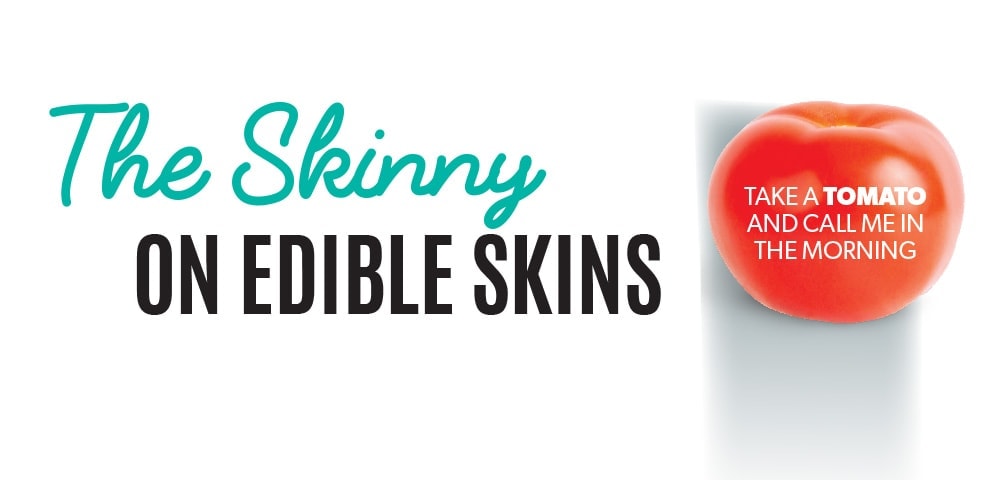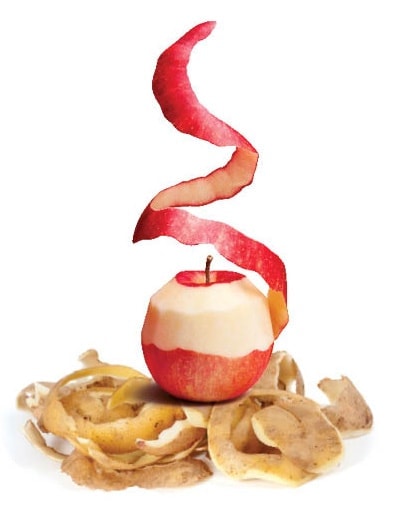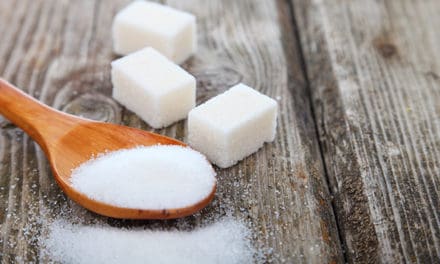
Have you heard of the Dirty Dozen™?
 Each year, the Environmental Working Group (EWG) shares the 12 fruits and vegetables, called the Dirty Dozen (DD), whose pesticide content should make you take a pass on conventionally grown produce and buy organics. The 2021 DD list to avoid unless buying organics included strawberries, spinach, kale and other greens, nectarines, apples, grapes, cherries, peaches, pears, bell and hot peppers, celery, and tomatoes. The DD list has not changed a lot over the years because these particular produce items have thin skins that are easily penetrated by pesticides and/or are hard to peel.
Each year, the Environmental Working Group (EWG) shares the 12 fruits and vegetables, called the Dirty Dozen (DD), whose pesticide content should make you take a pass on conventionally grown produce and buy organics. The 2021 DD list to avoid unless buying organics included strawberries, spinach, kale and other greens, nectarines, apples, grapes, cherries, peaches, pears, bell and hot peppers, celery, and tomatoes. The DD list has not changed a lot over the years because these particular produce items have thin skins that are easily penetrated by pesticides and/or are hard to peel.
But did you know that some skins are well worth consuming, especially if grown organically?
Here are some suggestions:
- POTATO skin is high in fiber, vitamins B and C, potassium, calcium, and iron.
- PEACH skin offers vitamin A, carotenoids (an antioxidant), and fiber, and may counteract the growth of eye cataracts.
- EGGPLANT skin is a veritable factory of antioxidants – the more purple the skin, the better.
- WATERMELON rind contains an amino acid called citrulline that can take nitrogen out of the blood and ease muscle pain. Not many of us eat the rind, but we should – by pickling, juicing, or stir-frying it.
- APPLE peel contains more vitamins and fiber than the flesh itself. It also has an antioxidant called quercetin, which helps improve brain and lung function.
- CUCUMBER’S dark-green skin contains potassium, antioxidants, and fiber, not to mention the bone-health and blood-clotting powerhouse known as vitamin K. But avoid the waxed skins in the grocery stores.
- MANGO skin may not seem appetizing – until you see the list of what’s in it: fiber, vitamins E and C, antioxidants, polyphenols, carotenoids, polyunsaturated fatty acids, and both omega-3 and omega-6. But beware, if you’re prone to poison ivy, you should know that mango skin contains the same irritating chemical, urushiol.
- KIWI skin can be de-fuzzed, providing you with antioxidants, flavonoids, and vitamin C. Like apples, there’s more of the good stuff in the skin than in the fruit itself.
- ZUCCHINI skin provides the usual ber, potassium, and vitamin C. But there are also antioxidants, including lutein, carotenoids, and zeaxanthin.
- BANANA skin – boil it to beat the toughness and bitter taste, then enjoy the boost of potassium, lutein, and tryptophan. You can also dry the skin and add it to recipes.
- ORANGE peel can be zested and added to main courses, side dishes, and even desserts. It provides twice as much vitamin C as the fruit itself, along with vitamin B6, calcium, potassium, magnesium, and riboflavin. That’s the skinny on healthy edible skins!
At Women’s Voice magazine, we strongly back the idea of food as medicine – after all, Mother Nature has provided us with quite an apothecary! But the latest reports out of agricultural research journals have us scratching our heads. According to GMO Free USA, scientists in Japan are using CRISPR gene-editing technology to quickly develop a new generation of tomatoes that are high in GABA, the amino acid believed to supplement the nervous system and provide a variety of potential health benefits. Among the benefits are lowered blood pressure, calmer nerves, and better sleep, to name just three.
Gene editing makes it unnecessary for scientists to hybridize plants over generations and years to obtain desired results. Instead of changing one gene at a time, this so-called “multiplexing” can make many changes at once. But as much as the industry likes to tout the use of CRISPR as precise and accurate, mounting study data raises doubts.
So for now, spare us these “modern” lifestyle additions to our diet. What’s to prevent these tomato experiments from creating off-target or unintended mutations, just as we have seen with older GMO corn, soy, and other genetically engineered products that have entered our food supply? And when, pray tell, will there be human safety trials? Until these gene-editing experiments prove to us, with scientific certainty, that they are safe and deliver what they promise, we’ll keep getting our nutrients from fruits and vegetables that are grown in the soil and come from farms – not factories, thank you very much!












